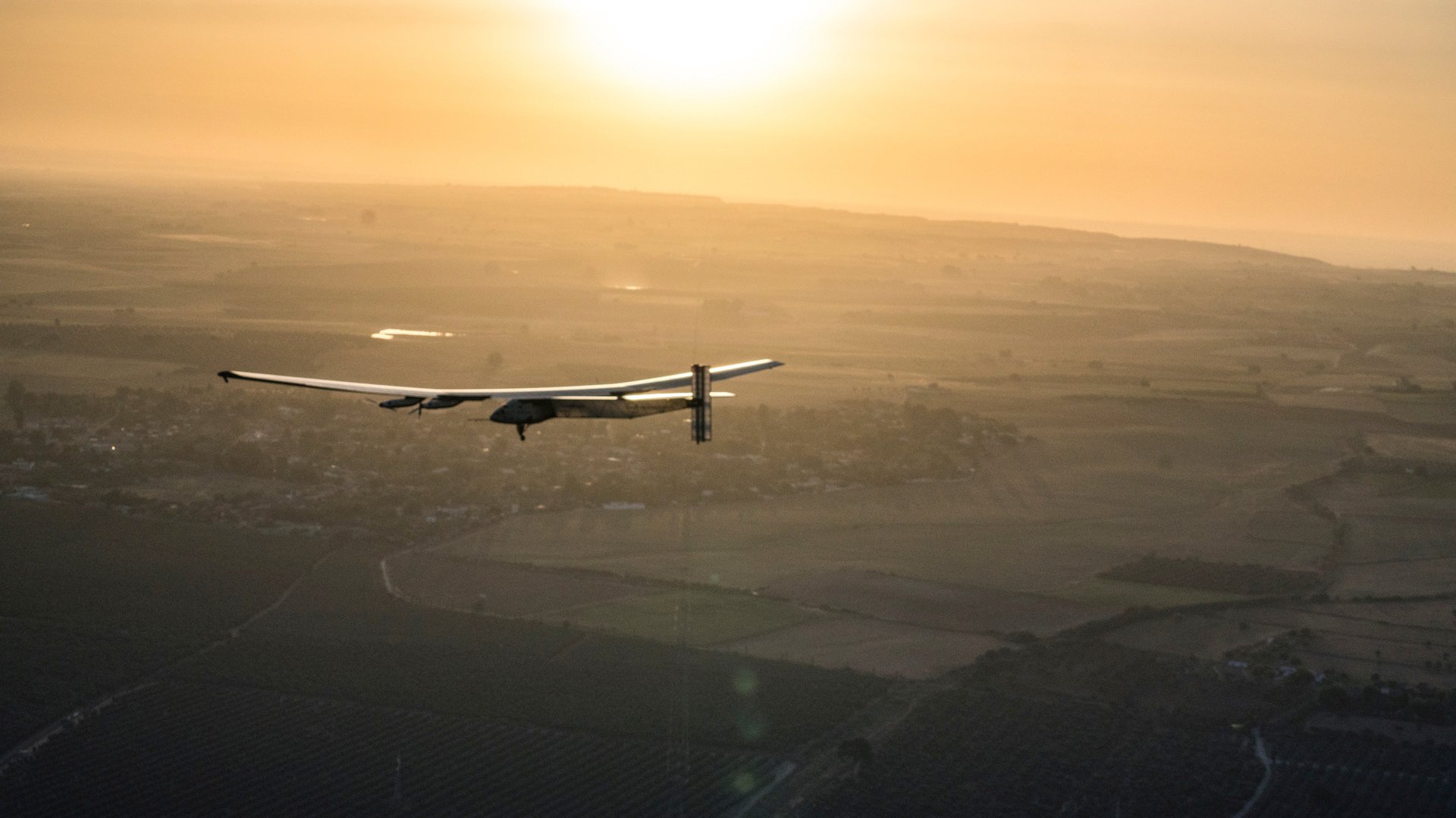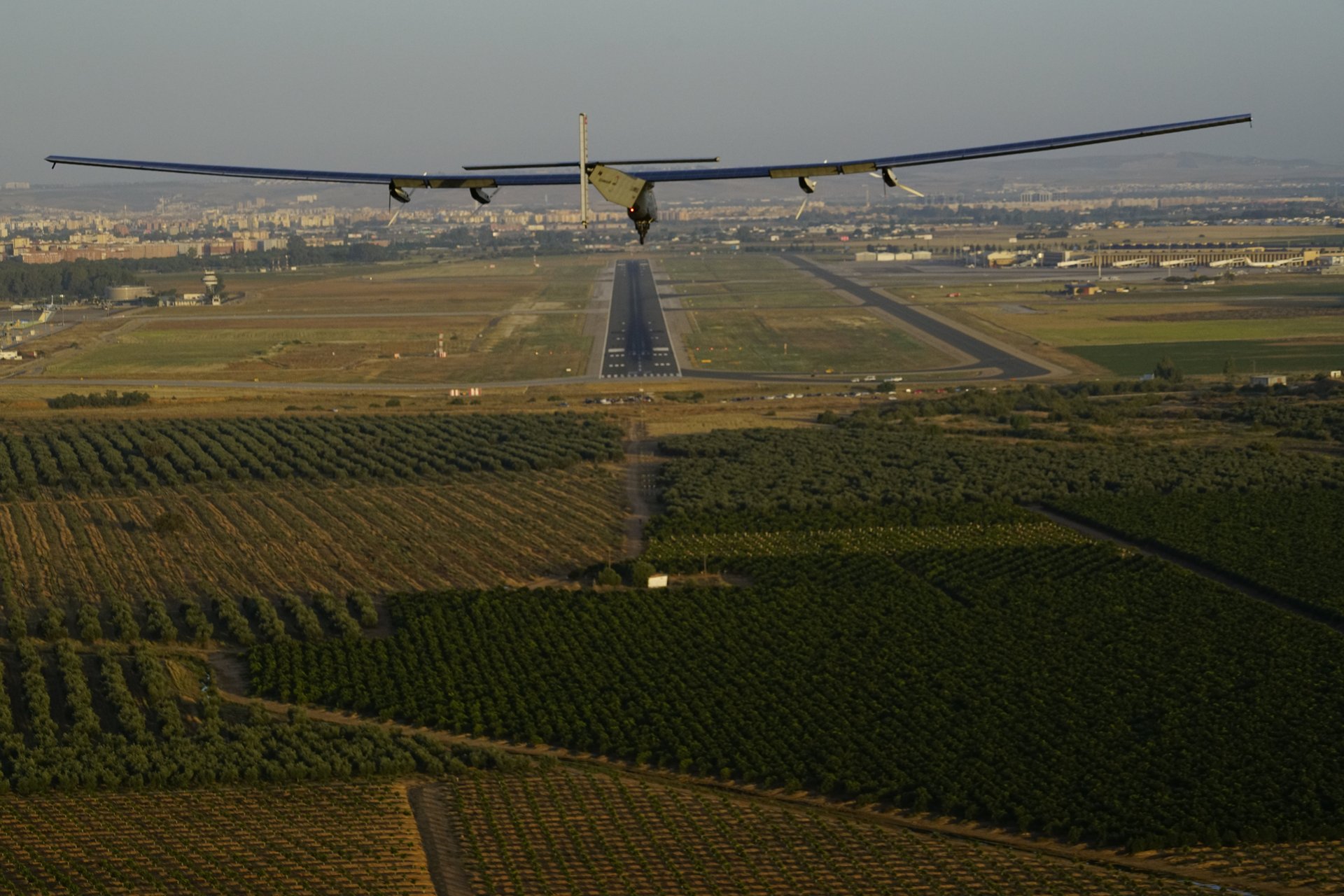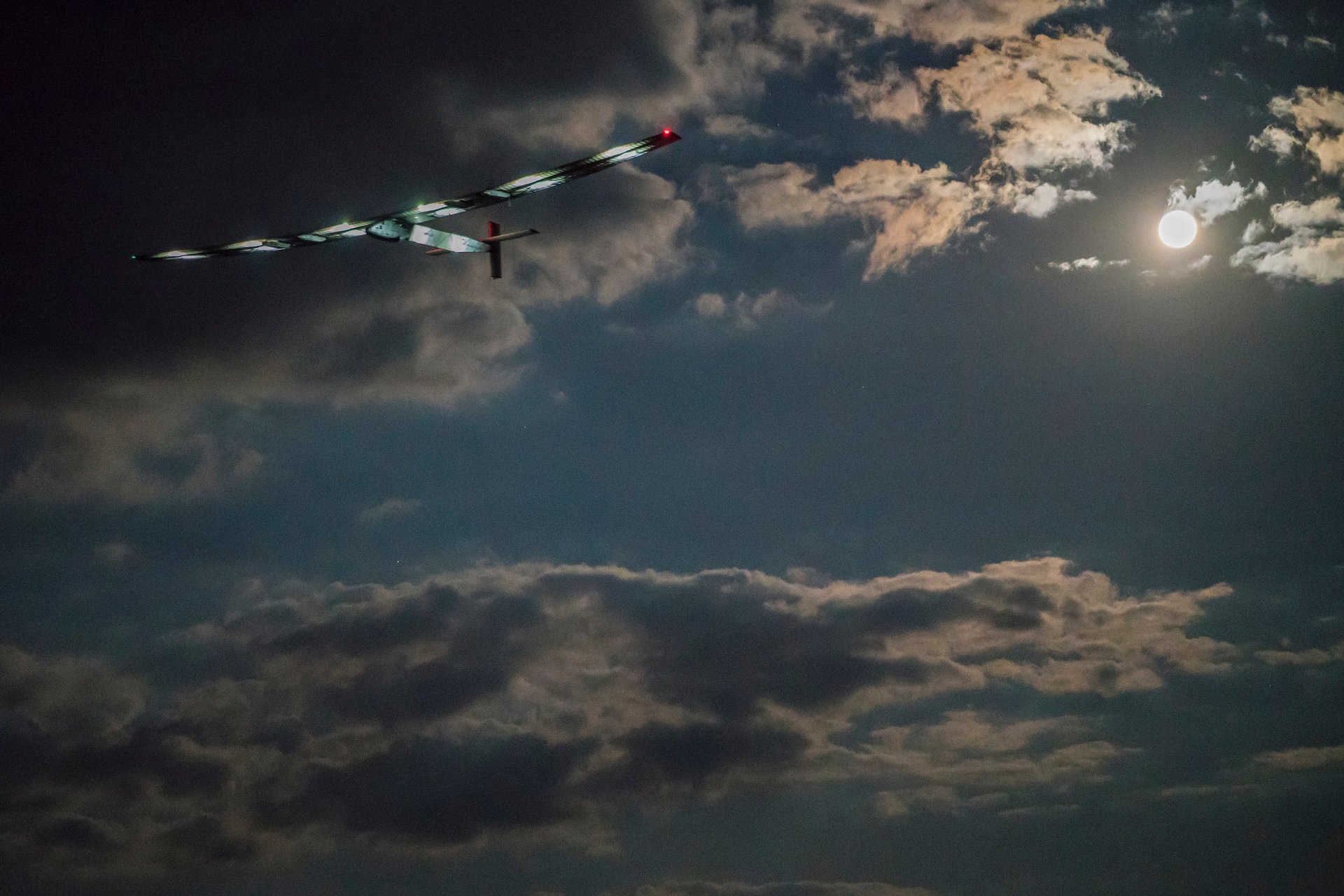A solar-powered plane has crossed the Atlantic for the first time
It’s a good thing this isn’t how we all have to travel across the pond.


It’s a good thing this isn’t how we all have to travel across the pond.
After making a pitstop in New York City, Solar Impulse 2, a solar-powered plane aiming to raise awareness of the potential of solar energy in transportation, landed in Seville, Spain, today after a 71-hour flight across the Atlantic ocean. (An ocean trip from New York to Southampton, UK, on the QE2 when it was in service took six days or 144 hours.)

The solar plane has an absolutely massive wingspan—roughly the same as a 747 jumbo jet’s—to accommodate all the solar cells that power its myriad engines, but its cabin is about the size of a station wagon. As a result, the plane is rather susceptible to turbulence, and so the team of two Swiss pilots had to wait for ideal weather conditions to cross the ocean. Unlike a 747, which can hold up to about 500 passengers, Solar Impulse 2 only has room for the two pilots.

The worldwide flight expedition, which started in Abu Dhabi in 2015 but was delayed in Hawaii for a few months after some fuel cells broke, is led by Andre Borschberg, a Swiss businessman and pilot, and Bertrand Piccard, the pilot who completed the first non-stop balloon flight around the world in 1999. The team, aiming to show what’s possible with solar power, had planned to land in Paris, to mimic Charles Lindbergh’s first flight across the Atlantic in 1927, but because of weather patterns, it had to settle for the southern Spanish town.

The trip from JFK airport in New York across the Atlantic covered over 4,200 miles as the plane traveled at 28,000 feet above sea level, according to Motherboard. The arduous trip made the average transatlantic flight on even the most budget airline sound appealing: The plane’s cabin is not pressurized, meaning the pilots had to wear oxygen masks, and were only able to rest for about 20 minutes at a time, a representative for the team told Motherboard. Not exactly enjoyable, but it does point at a potential future where aviation is not governed by fossil fuels, even if it’s a distant one.
The zero-emission plane will be making its next stop somewhere in Greece or Egypt—depending on the weather—before it returns to Abu Dhabi.